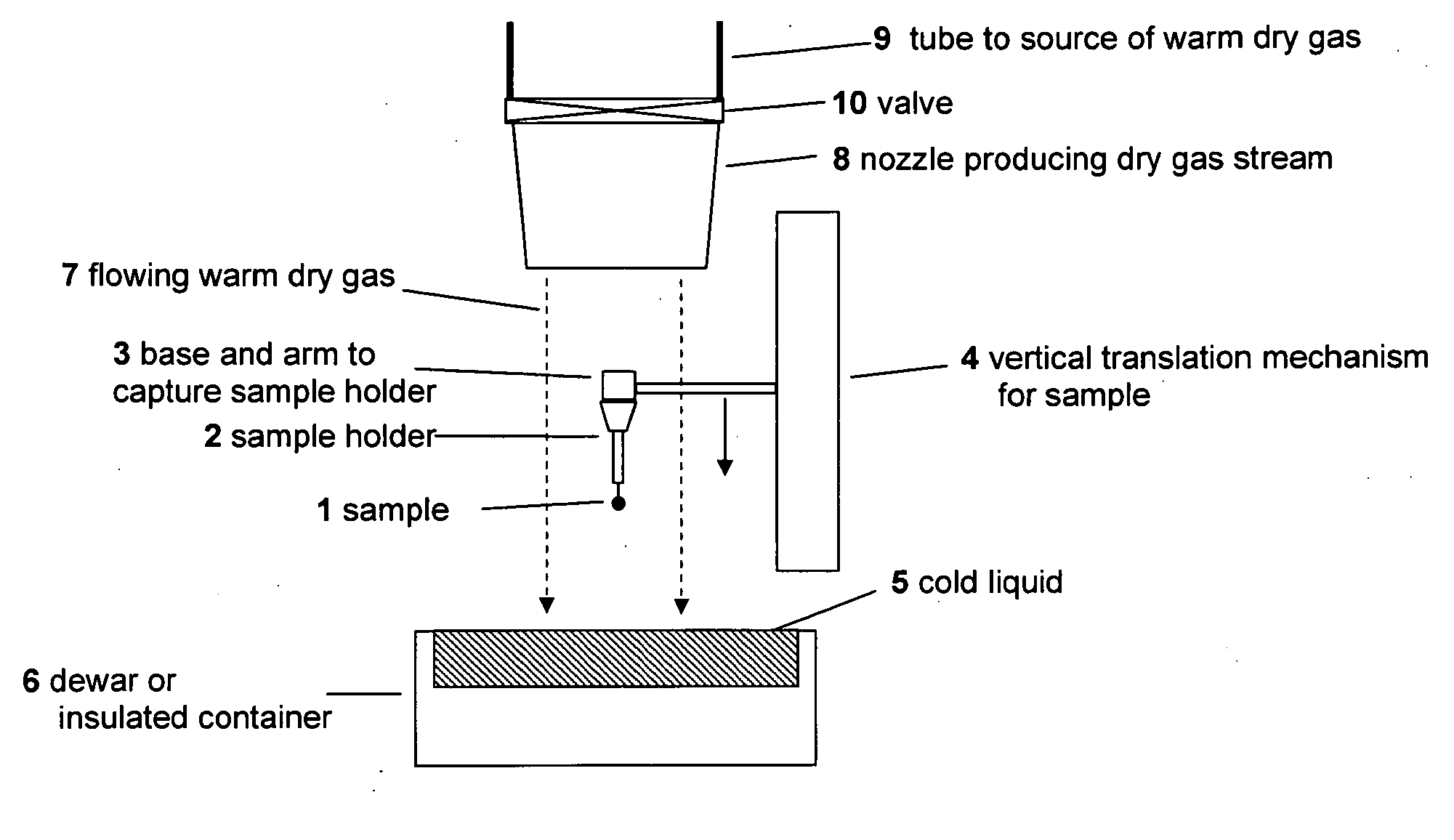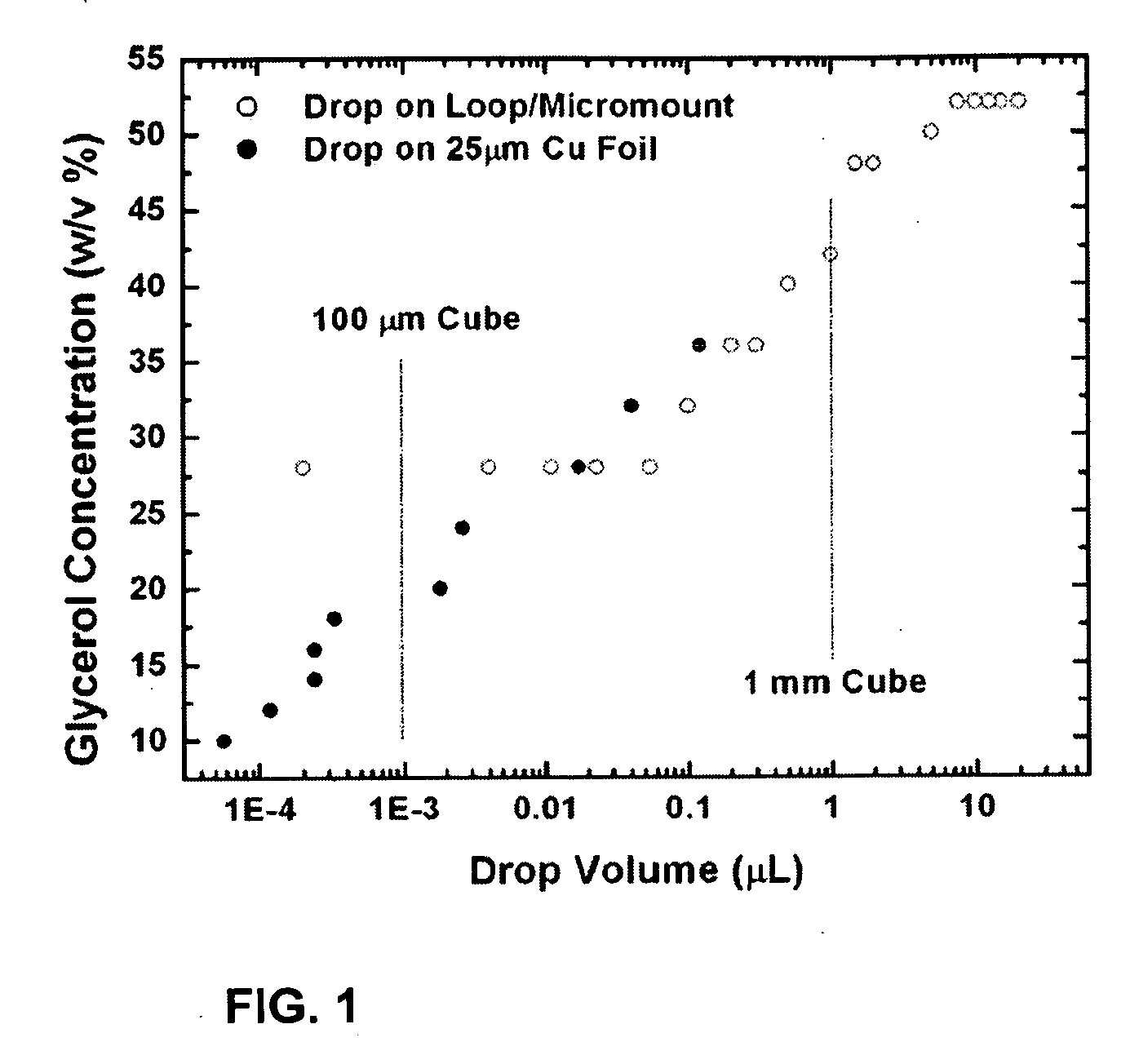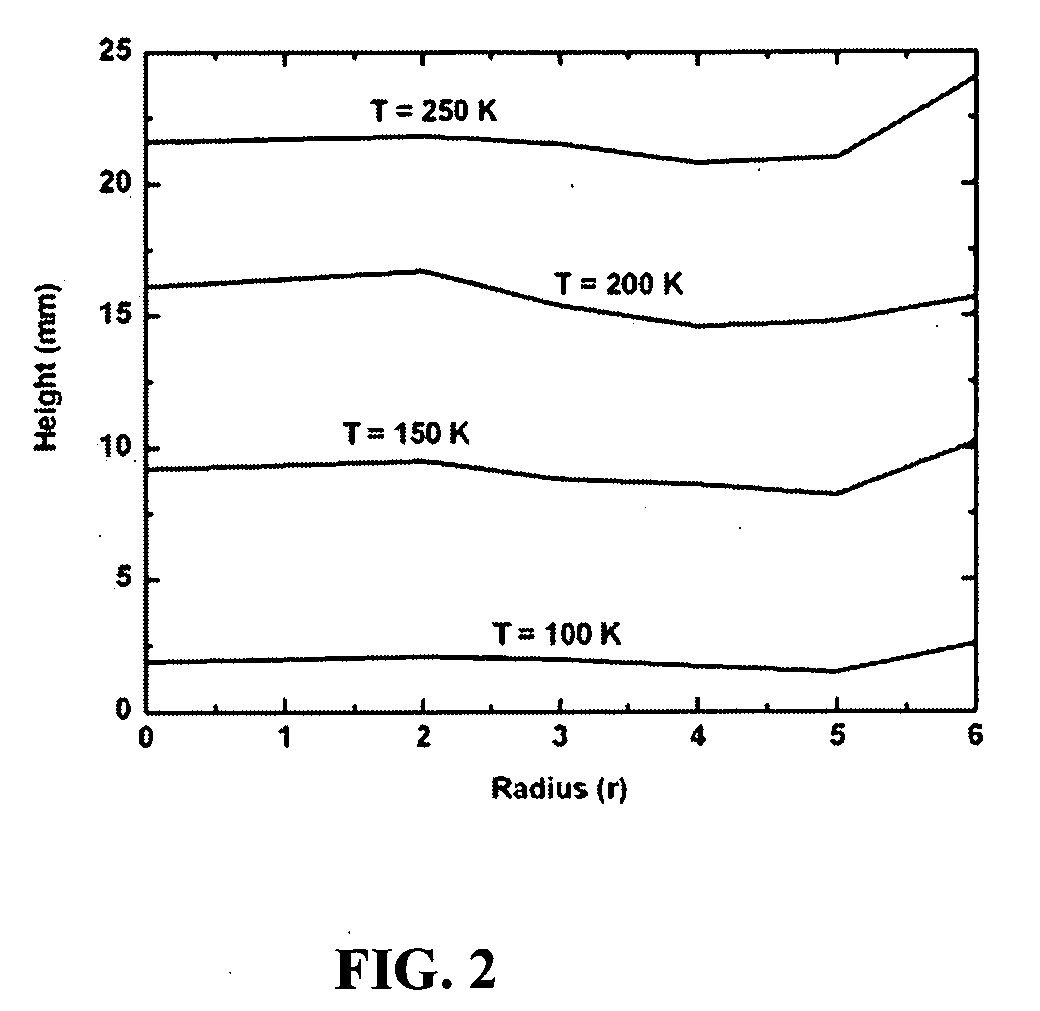System and method for increased cooling rates in rapid cooling of small biological samples
a technology of biological samples and cooling rates, applied in the field of system and method for increasing cooling rates in rapid cooling of small biological samples, can solve the problems of protein and virus crystals easily damaged, protein and virus structure changes that affect protein function, and high variability in protein structure after cryopreservation and thawing, so as to reduce the exposed area and heat transfer, reduce condensation and freezing of water vapor, and reduce the evaporation of liquid cryogens
- Summary
- Abstract
- Description
- Claims
- Application Information
AI Technical Summary
Benefits of technology
Problems solved by technology
Method used
Image
Examples
Embodiment Construction
[0046]Before a more detailed consideration of the various preferred embodiments of the present invention will be presented, the exponent and investigations conducted by the inventors which ultimately led to the creation of the present invention will be discussed.
[0047]First, the inventors have investigated flash cooling by immersion in liquid nitrogen and liquid propane of common water-cryoprotectant mixtures as a function of the volume cooled. The liquid drop samples were cooled by plunging them from air into a Dewar flask of liquid nitrogen or propane, the same method that is used for flash cooling protein crystals for cryocrystallography. FIG. 1 shows the minimum glycerol concentration required to obtain a vitrified sample upon plunging into liquid nitrogen. Open circles are data collected by plunging drops held in tungsten wire loops (for volumes above 1 μl) or in microfabricated polyimide loops (below 1 μl) into liquid nitrogen at Tv=77 K without removing the cold gas layer. So...
PUM
 Login to View More
Login to View More Abstract
Description
Claims
Application Information
 Login to View More
Login to View More - R&D
- Intellectual Property
- Life Sciences
- Materials
- Tech Scout
- Unparalleled Data Quality
- Higher Quality Content
- 60% Fewer Hallucinations
Browse by: Latest US Patents, China's latest patents, Technical Efficacy Thesaurus, Application Domain, Technology Topic, Popular Technical Reports.
© 2025 PatSnap. All rights reserved.Legal|Privacy policy|Modern Slavery Act Transparency Statement|Sitemap|About US| Contact US: help@patsnap.com



